Difference between revisions of "V2/Intro/CMS"
(Created page with "<h1 class="main-heading">Content Management System (CMS)</h1> Senfi's Digital Twin Dashboard is the frontend visualization application. Spatial data, sensors data, system data...") |
|||
| (20 intermediate revisions by the same user not shown) | |||
| Line 1: | Line 1: | ||
<h1 class="main-heading">Content Management System (CMS)</h1> | <h1 class="main-heading">Content Management System (CMS)</h1> | ||
| − | Senfi's | + | Senfi's Content Management System (CMS) is the backend content management application. Spatial data, sensors data, system data, workflows rules, alarms, users, access groups etc. has to be configured on the CMS before they can be ingested by Senfi cloud and output to the Digital Twin for visualization and operation purposes. |
| − | [[File: | + | [[File:Self_service_01.jpg|450px|center|link=]] |
| − | ==== | + | ==== Site Management ==== |
| − | Senfi | + | Senfi CMS has a Site Manager to enable Users to create and manage their own sites. Users can perform self-service uploading of 3D models or create their own user-drawn models, and in the long run, End-Users can perform updates on the 3D models on their own, without needing to re-engage the system integrators. |
| − | [[File: | + | [[File:Site_Manager.png|600px|center|link=]] |
| − | + | ==== Sub-systems Integration ==== | |
| + | Senfi CMS provides Asset, Measurement and API Key management to allow self-service integration with the sub-systems. Connectors are used to allow Senfi to communicate with the sub-systems, and the point data transferred from the sub-systems are stored in measurements. Assets that may encompass one or more measurements are then used in Senfi to represent the physical object/system of interest in the real-world. | ||
| − | + | This gives End-Users the flexibility to continue expanding and onboarding new sub-systems in the future. | |
| − | = | + | [[File:Intro_CMS_Subsystem_Integration.png|800px|center|link=]] |
| − | |||
| − | + | ==== Rules Engine ==== | |
| + | Senfi CMS has a Rules Engine to allow Users to define automated workflows that can interoperate between the sub-systems (e.g. meeting room system can initiate a robot to clean up the meeting room after meeting ends). This allows Senfi to reduce manpower needed in operating building operations. | ||
| − | + | [[File:Autonomous_Intelligence_Workflows.png|800px|center|link=]] | |
| − | |||
| − | |||
| − | |||
| − | |||
| − | |||
| − | |||
| − | + | Backed by low-code/no-code user interface, Users can easily define the workflows via Expressions. When the conditions stated in the Expression are met, Events and/or Alarms are automatically triggered by Senfi as defined by User. | |
| − | ==== Users ==== | + | [[File:Automated_Rules_Engine_v2.png|450px|center|link=]] |
| + | |||
| + | ==== User Management ==== | ||
| + | Senfi CMS has a comprehensive User management system to allow End-Users to perform self-service of user management. Through the CMS, End-Users can: | ||
| + | * Add/Manage users | ||
| + | * Create and assign Roles to users | ||
| + | * Manage content access via Access Grouping | ||
| + | |||
| + | [[File:Intro_CMS_User_Management.png|640px|center|link=]] | ||
| + | |||
| + | ==== Who Should Be Using the CMS ==== | ||
Senfi's CMS low-code/no-code user interface can be used by anyone who needs to perform platform setups, for example: | Senfi's CMS low-code/no-code user interface can be used by anyone who needs to perform platform setups, for example: | ||
* System Integrators | * System Integrators | ||
| Line 36: | Line 41: | ||
==== What's Next ==== | ==== What's Next ==== | ||
----- | ----- | ||
| − | * [[V2/ | + | * Ready to [[V2/Getting_started|get started]] |
Latest revision as of 16:05, 23 June 2021
Contents
Content Management System (CMS)
Senfi's Content Management System (CMS) is the backend content management application. Spatial data, sensors data, system data, workflows rules, alarms, users, access groups etc. has to be configured on the CMS before they can be ingested by Senfi cloud and output to the Digital Twin for visualization and operation purposes.
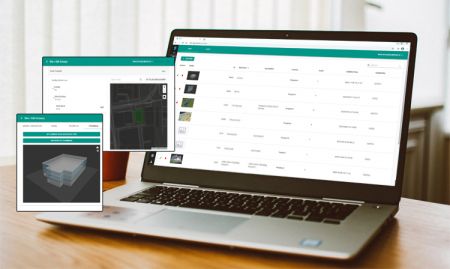
Site Management
Senfi CMS has a Site Manager to enable Users to create and manage their own sites. Users can perform self-service uploading of 3D models or create their own user-drawn models, and in the long run, End-Users can perform updates on the 3D models on their own, without needing to re-engage the system integrators.
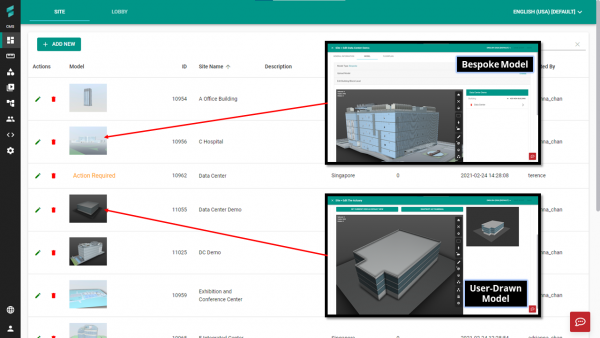
Sub-systems Integration
Senfi CMS provides Asset, Measurement and API Key management to allow self-service integration with the sub-systems. Connectors are used to allow Senfi to communicate with the sub-systems, and the point data transferred from the sub-systems are stored in measurements. Assets that may encompass one or more measurements are then used in Senfi to represent the physical object/system of interest in the real-world.
This gives End-Users the flexibility to continue expanding and onboarding new sub-systems in the future.
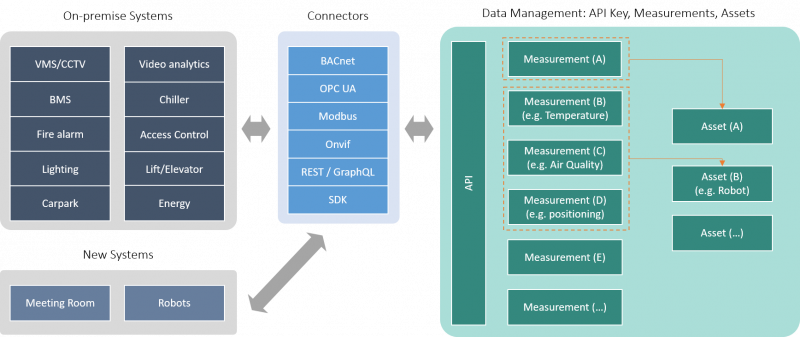
Rules Engine
Senfi CMS has a Rules Engine to allow Users to define automated workflows that can interoperate between the sub-systems (e.g. meeting room system can initiate a robot to clean up the meeting room after meeting ends). This allows Senfi to reduce manpower needed in operating building operations.
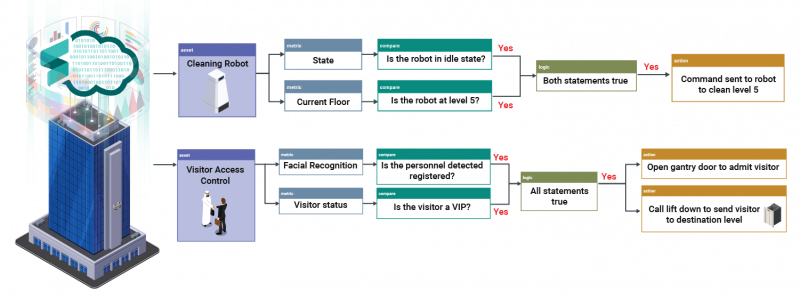
Backed by low-code/no-code user interface, Users can easily define the workflows via Expressions. When the conditions stated in the Expression are met, Events and/or Alarms are automatically triggered by Senfi as defined by User.
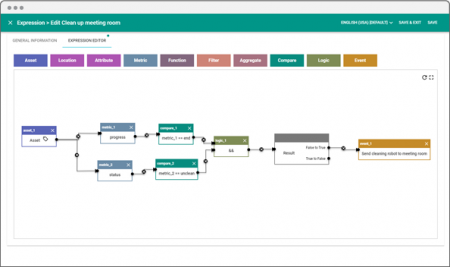
User Management
Senfi CMS has a comprehensive User management system to allow End-Users to perform self-service of user management. Through the CMS, End-Users can:
- Add/Manage users
- Create and assign Roles to users
- Manage content access via Access Grouping
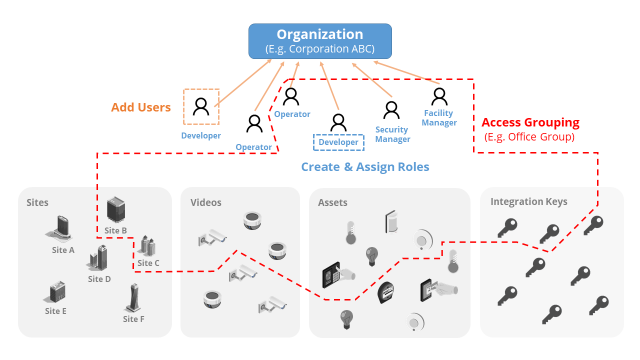
Who Should Be Using the CMS
Senfi's CMS low-code/no-code user interface can be used by anyone who needs to perform platform setups, for example:
- System Integrators
- Digital Team
- End-User
What's Next
- Ready to get started
